Comic-Con 2010: Day 3
Jul4
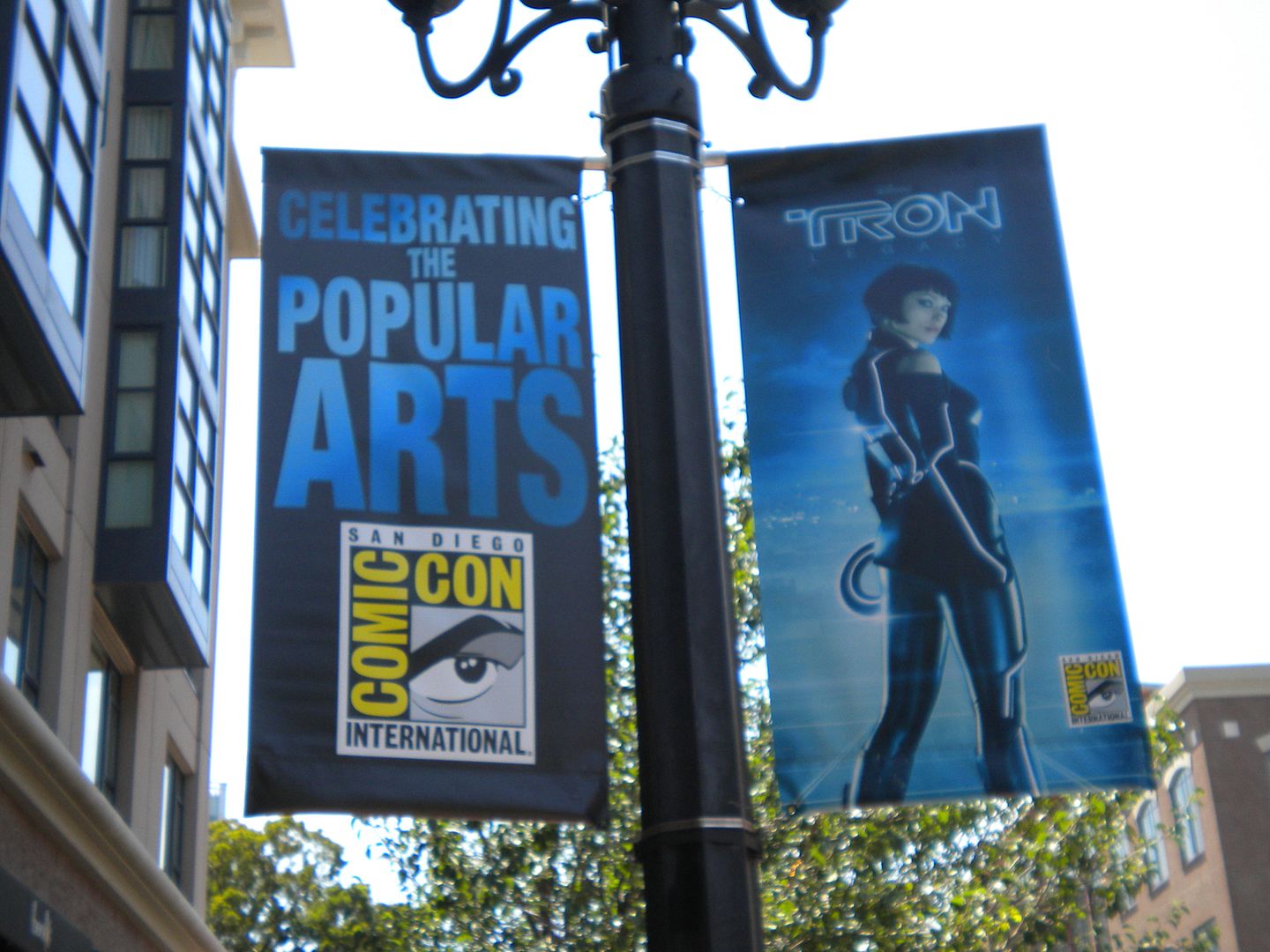
Street signs adorning the City of San Diego for Comic-Con 2010
Day 3 was Star Wars Day at San Diego Comic-Con International and we have something shocking to report, ladies and gentlemen. We did not see a single light saber, not one! Since we almost incurred an unfortunate eye injury last year due to an overenthusiastic Jedi, this was most welcome relief. For ScriptPhD.com, today was all about science and technology. In a day that could not have been more tailor-made for our website, we enjoyed panels with the eminent sci-fi television writers of today discussing writing for genre TV (a must-read for any aspiring TV writers out there!), a visit from the greatest science fiction writer in the history of science fiction, Ray Bradbury, a preview of next season’s sci-fi show The Event, and a panel on how exactly shows like CSI “tech” out with gadgets galore. Oh, yes, did we mention we got to hang out privately with the MythBusters?? With the help of our intrepid reporter Bryy Miller, we bring you the most complete Comic-Con coverage on the web. Plus, our Costume of the Day, after the “continue reading” cut!
REVIEW: “Splice” (includes VIDEO interview with cast + crew)
Jun1
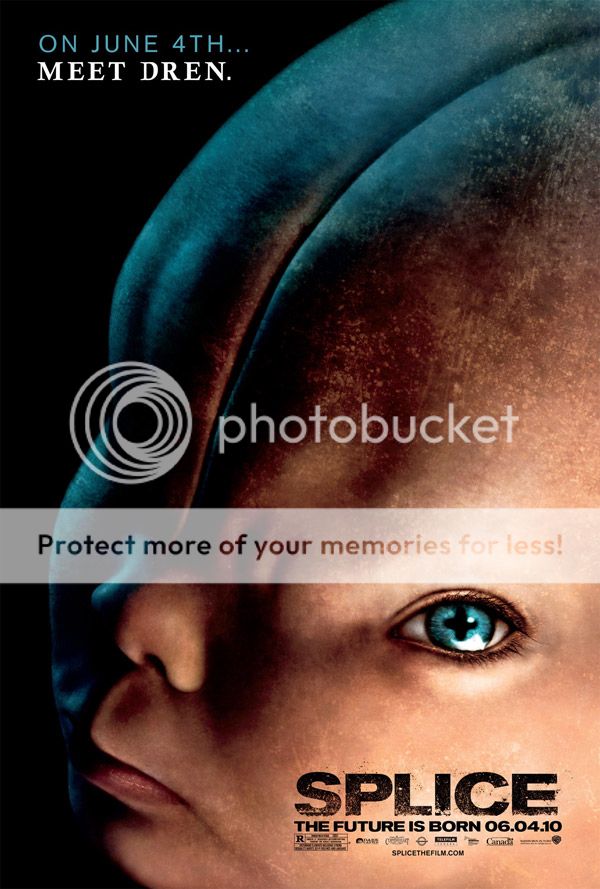
Splice ©2010 Warner Brothers Entertainment, all rights reserved.
About a week and a half ago, scientists achieved a remarkable evolutionary stepping stone in the technological holy grail of eventually engineering synthetic life. Nicknamed ‘Synthia’ by her experimental progenitors, the latest discovery is a viable, self-propagating yeast cell hosting a bacterial Mycoplasma mycoides genome (consisting of non-biological DNA) purely composed in the laboratory. In eerily apt timing, Splice, a new science fiction thriller premiering this week, explores the scientific ramifications and bioethical morass encompassing the creation of a human-animal hybrid by a rogue superstar genetics couple. Under the “continue reading” cut, ScriptPhD.com’s review of Splice, discussion of the expanding frontiers of genetic engineering, and a special video interview with the director/writer, producer and stars of the film.
Retrospective: ScriptPhD.com Celebrates One Year!
May2

Our official ScriptPhD anniversary cake! We wish we could have saved a slice for all our fans!
One year ago, on today’s date, a new blog named ScriptPhD.com was launched—the first of its kind. What started out as a simple idea, to write about science and technology in entertainment, has evolved and grown beyond our wildest expectations. We have met astronauts. We have hung out with the MythBusters. We have interviewed movie stars and writers. We have engaged scientists, engineers, and doctors into thinking about and discussing science in a completely new perspective. But most importantly, we have expanded our coverage to include media, advertising, and relevant pop culture topics to fully encapsulate the portrayal of science in the messages we collectively absorb. For those that have been faithfully on board since day one and for our newest fans, we wish to extend warm gratitude for the support and encouragement and a retrospective of our best work from the past year. We also share some exciting, ambitious plans for the year ahead, all under the “continue reading” cut!
ScriptPhD Roundtable: Naturally Obsessed—The Making of a Scientist
Apr0

Graduate student Rob Townley mixes solution in a beaker in a scene from documentary "Naturally Obsessed: The Making of a Scientist." Film images ©ParnassusWorks Films, all rights reserved.
Society’s unequivocal fascination with science and scientists, reflected by a growing presence as staples of film, television, and popular culture, has only been magnified by the enigmatic (and seemingly impenetrable) aura in which they are enveloped. Their studies decidedly abstruse, their coded language unintelligible, their habits quirky and eccentric, the world of the scientist has been an audiovisual shroud of mystery—until now. In perhaps the most authentic, unfiltered, extemporaneous portrayal of scientists in their environment ever recorded, new documentary Naturally Obsessed: The Making of a Scientist welcomes the lay audience into the laboratory as silent observers. No reservations, no restrictions, no preconceptions. The result is an emotionally stunning masterpiece that connects us to scientists as people, reaches out across professional divides, and places PhD students, the backbone of the modern scientific laboratory, under the microscope for the first time. ScriptPhD.com recently screened the movie with a group of UCLA PhD biology students. Under the “continue reading” cut is our review, along with an honest roundtable discussion that included reaction to the movie, its parallel to their lives, and the training of modern scientists.
Selling Science Smartly: Dow Human Element Campaign
Feb3

When it comes to the interface of art and science, in many ways Madison Avenue finds itself in the position of the early days of sci-fi entertainment, where campy, unrefined productions took decades to evolve into the sophisticated films and shows we enjoy today. To be brutally honest, 95% of current science and technology advertising ranges from hackneyed to terrible; unimaginative, uncreative, uninspired. But here at ScriptPhD.com, we want to focus on the superlative 5%. What makes these campaigns work, what elevates their content above the crowd and most importantly, how do they fit within the theme of the science or industry they are promoting? This is why we are expanding our umbrella of coverage—which has heretofore included film, television and media—to the final frontier: advertising. In our brand new series entitled “Selling Science Smartly,” we will profile the best that science and technology advertising (print, TV, radio, digital and everything in-between) has to offer. Where possible, we will interview the respective campaign’s agencies and creative teams to give you a rarely revealed behind-the-scenes purview into the process and foundation of making these ads. We are proud to launch the series with the exceptional Dow Human Element campaign, including an in-depth interview with Creative Director and mastermind John Claxton of Draftfcb Chicago. For the full article, please click “continue reading.”
Love is a Many-Splendered Algorithm
Feb2

You spot someone across a crowded room. There is eye contact. Your heart beats a little faster, palms are sweaty, you’re light-headed, and your suddenly-squeamish stomach has dropped to your knees. You’re either suffering from an onset of food poisoning or you’re in love. But what does that mean, scientifically, to fall in love, to be in love, to stay in love? In our special Valentine’s Day post, Editor Jovana Grbić expounds on the neuronal and biophysical markers of love, how psychologists and mathematicians have harnessed (and sometimes manipulated) this information to foster 21st Century digital-style romance, and concludes with a personal reflection on what love really means in the face of all of this science. You might just be surprised. So, Cupid, draw back your sword… and click “continue reading” for more!
Forever Young: Living in an Age of Agelessness
Jan1
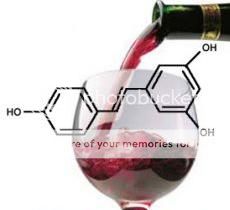
The chemical compound resveratrol, a component of red wine that has been linked to anti-aging properties in laboratory experiments.
During a recent trip to New York City, I had the pleasure of befriending exciting new author Ernesto Robles, whose debut novel The Malthusian Catastrophe is a ScriptPhD.com recommended pick. Smart, topical, fast-paced and decidedly engrossing, this biomedical thriller drives at the roots of our cultural obsession with the “fountain of youth” and the perilous socioeconomic repercussions of actually finding and disseminating it. In a year when the Nobel Prize for Medicine and Physiology went to a team of researchers for their discovery of how chromosomes are protected by telomeres and the enzyme telomerase, essential biological components of the human aging machinery, and a cultural era that has anointed juvenescence as sacrosanct, Malthusian’s overarching themes are especially germane. ScriptPhD.com’s discussion includes a review of the book, the biology and ethics of current aging research, and a one-on-one interview with Mr. Robles. For full content, please click “continue reading.”
GUEST POST: On Chemistry, Movies and Making Science Entertaining
Jan2
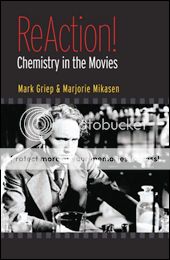
Reaction! Chemistry in the Movies is an Oxford University Press title. ©2009, all rights reserved.
One of my favorite movies as a kid, and now, as a professional scientist, is Andromeda Strain. The heroes are mostly older, professorial types who work feverishly to understand an alien organism and save the planet. After being asked to review ReAction! Chemistry in the Movies for ScriptPhD.com, I was so curious to consume (with relish) the book’s guesswork about the chemistry found in Andromeda Strain. After returning to the beginning of the book and giving it a read, I was thrilled to find that ReAction! is a detailed, thoughtful exploration of the representation of chemistry in film. The book addresses, first and foremost, the fact that chemistry can play a lead role in film. The authors also discuss the dichotomy between the “dark” and “bright” sides of chemistry (and science) as illustrated by films in which chemistry or chemists play a central role. Also included are several playful explorations of the real science behind some famous examples of fictional chemistry in film. After the break is a full review of the book along with an in-depth interview with authors Mark Griep and Majorie Mikasen on the process of working together as chemist and artist, portrayal of chemists in film and how film can change public perception in science.
From the Annals of Psychology: Fear and Loathing in a Modern Age
Dec3
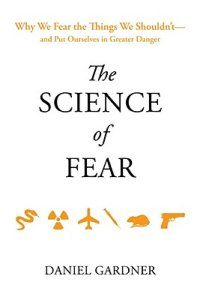
“First of all, let me assert my firm belief that the only thing we have to fear is fear itself—nameless, unreasoning, unjustified terror which paralyzes needed efforts to convert retreat into advance.” These inspiring words, borrowed from scribes Henry David Thoreau and Michel de Montaigne, were spoken by President Franklin Delano Roosevelt at his first inauguration during the only era more perilous than the one we currently face. But FDR had it easy. All he had to face was 25% unemployment and 2 million homeless Americans. We have, among other things, climate change, carcinogens, leaky breast implants, the obesity epidemic, the West Nile virus, SARS, avian/swine flu, flesh-eating disease, pedophiles, predators, herpes, satanic cults, mad cow disease, crack cocaine, and let’s not forget that paragon of Malthusian-like fatalism—terror. In his brilliant book The Science of Fear, journalist Daniel Gardner delves into the psychology and physiology of fear and the incendiary factors that drive it, including media, advertising, government, business and our own evolutionary mold. For our final blog post of 2009, ScriptPhD.com extends the science into a personal reflection, a discussion of why, despite there never having been a better time to be alive, we are more afraid than ever, and how we can turn a more rational leaf in the year 2010.
Why Science is the Ultimate Blue-Chip Investment
Dec1
The famous French scientist Louis Pasteur once said, “There are no such things as applied sciences, only applications of science.” As a nation we are continuing to find ourselves in increasingly difficult economic times. Our state and federally elected leaders are constantly under pressure to make difficult appropriations decisions at all levels of their budgets. At the federal level, the National Institutes of Health (NIH), our nation’s primary investor of biomedical research funding, is no exception during this economy. A recent New York Times article, The Science of Spending Stimulus Money Wisely, questioned the value of funding basic research at the cost of immediate jobs and dividends. Indeed, a central question regarding the public financing of biomedical research emerges more routinely: How do we strike the right balance between the funding of basic research and the funding of applied research? What is the value of each to scientific development, the pursuit of knowledge, and most importantly, mankind? These question have been debated for generations, largely because there is no right answer. There is no exact formula, or panel of experts that will be able to determine the exact dollar amount which should be spent in each area, nor is there a correct percentage by which the money should be divided between the two areas. The following article postulates that continued funding and public understanding of basic research, the foundation for all applied research, is the smartest long-term investment of all.

















